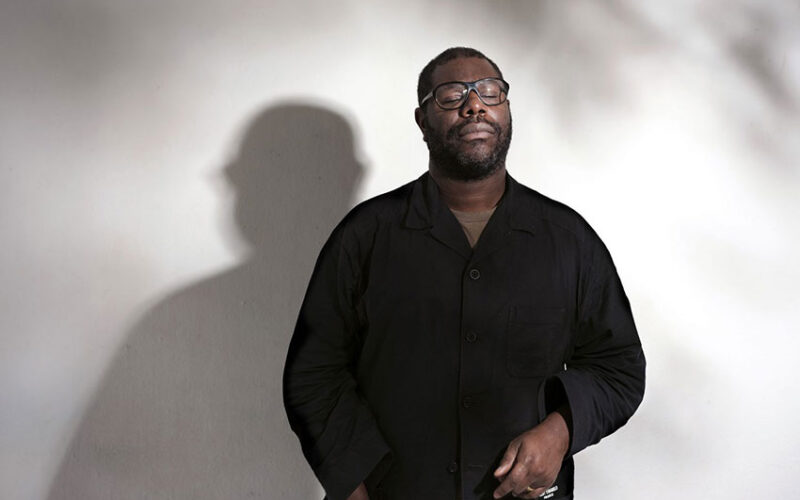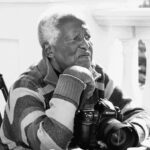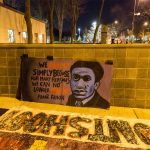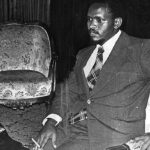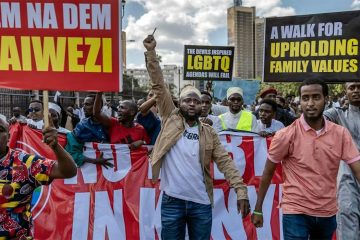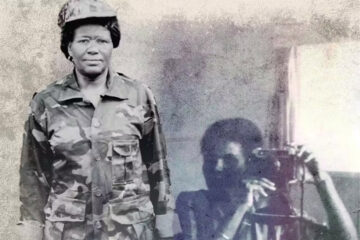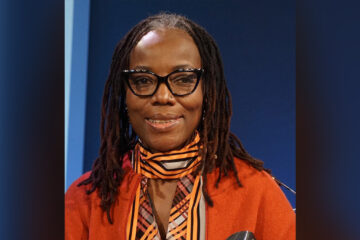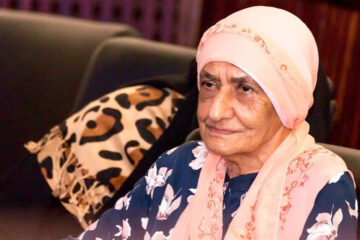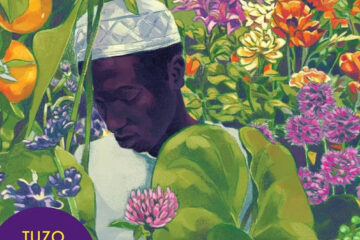FRANTZ Fanon observed that in white-dominated societies, reason has a nasty habit of taking flight whenever Blacks enter the room. He joined WEB Du Bois in an additional observation: in societies saturated with the malediction of white supremacy, a form of double consciousness is imposed on the people once referred to as “negroes” and then “blacks”. That perspective involved Blacks seeing themselves from the negative gaze and rationalisations of anti-Black hatred. From that point of view, what were Blacks but, in Du Bois’ words, “problems”?
Yet, Du Bois later learned that the resilience of a people in whose shoes most whites wouldn’t last a day proved otherwise. This knowledge came not only through the example of his life, but also through the many people of African descent that he witnessed and studied, who were fighting each day under the yoke of white violence and double-standards of justice – for what is white justice but an ongoing injustice on the rest of the world?


The problem, he concluded, was not Black people; it was the racist societies that hurled problems at them on a daily basis.
This understanding of Black people being human beings who face the problem of racist white society took Du Bois on a path from double consciousness to potentiated double consciousness. This is the dialectical process of being able to realise and hold a racist society accountable for its misdeeds. It is a realisation that involves the humanity of a people who exist under the heels of a society that – as the world witnessed last year through the murder of George Floyd in Minneapolis – asphyxiates them. And it demanded action on a path from the diminutive “black” to the historical agent: “Black”.
Steve McQueen’s epic miniseries, Small Axe (2020), takes on these themes of potentiated double consciousness and, simultaneously, addresses a fundamental misconception about racism. The world could rally against the United States’ anti-Black racism through an ironic delusion of it being a quarantined phenomenon, that was confined to a country marked by a history of genocide of many of the Indigenous people and chattel slavery on its soil. However, this elides many important elements of white supremacism and America’s peculiar Anglo-Christian capitalist heritage as a former colony of Britain.
It is no accident that no former European colony was unmarked by racism, and each colonising and colonised society had its own peculiar manifestation of racism according to its technologies of evasion, exploitation and extraction. As much as Britain held its narcissistic self-portrait of racism as an aberration of societies beyond its borders, the fact of the matter is that British national civility hid degradation and violence in plain sight.
Focused on events from the early 1970s through to the 1980s, Small Axe examines and offers a remarkable, multidimensional and intersectional portrait of anti-Black racism and struggles for Black liberation. It does this through each historical tale, beautifully accompanied by a breathtaking cinematography and musical score.
The joy and aspiration of freedom
The Small Axe miniseries is a tour de force on many levels. Its aesthetic achievement is nothing short of a prime example of decolonial aesthetics.
It does not fall into the reductionistic trap of treating Black lives – in this case primarily Afro-Caribbean – as ethnographic curiosities for white thought. It is a major work through which Black aesthetics, as an expression of value, comes to the fore. Art, after all, is a conundrum from the point of view of instrumental reason, which demands it to exist and be used for a specific capitalist purpose. What could it be for, if not commodified?
Yet, beyond the specific question of its usefulness in terms of this kind of monetised “value”, the philosophical understanding of art is that its necessity is ironically marked by its freedom. From a purely biological perspective, the human species doesn’t “need” art; it needs food, protection, a sustainable physical environment and, to continue beyond a single generation, sexual reproduction. Yet, as we know, humanity defies all this through producing, once the revolution of culture and language arose, art, which emerges as an imaginative assertion of the human spirit in a universe without reason to give a damn about us.
Colonialism, saturated with racism, degrades this insight by limiting it to the view that only one kind of people matter, and, in doing so, attempts to block the dignity of art to the rest. It infuses reality with a seriousness through which there is little room for the rest of humanity to breathe. For “downpressed” people, as Rastafari would say, every moment of play is an infusion of oxygen; art, in this sense, is an expression of freedom.

As with the critical, dialectical movement from double consciousness, Black art is at its best when it is potentiated, when it enables us to see, feel and understand what once eluded us. And in doing so, it makes us aware of our shackles, why we must get rid of them and reach beyond our given humanity to our human possibility. What is this but the joy and aspiration of freedom?
The politics of taking action
McQueen’s miniseries offers a clear set of theses. In the face of oppression, one must take political action, but that action must be such that one does not lose sight of one’s humanity. Play is an important reminder but, crucially, there is the value of the ongoing struggle of education. This struggle is ongoing because institutions of avowed education in racist societies are devoted to miseducation.
Misinformation, marked by ongoing violence to suppress people’s effort to think, is what undergirds colonial so-called education. Its purpose is to bolster preferred versions of reality that are suitable for those who not only exploit and rule but also suffer each day fears of their own mediocrity and eventual irrelevance. It is instrumental power placed in the hands of little men and their abetters. The technologies of enforcement of this power permeate racist societies through its problematic frontline agents, ranging from the police and judges to those who run its economy, healthcare system and schools. The struggle for liberation must, therefore, be waged on all fronts.
The title of the anthology of films is inspirational, as it is from the proverb – “If you are a big tree, we are the small axe” – brought to music by Bob Marley and the Wailers. It is an apt proverb as the condition of colonised and enslaved people is one of fighting against seemingly impossible odds.
Yet, as the proverb attests, size is not always what matters. This is a theme throughout the history of African diasporic tales of resistance for centuries. Each generation has its mission to fulfil or betray, as Fanon declared. From the 15th century onward, many faced situations in which the message was clear: their actions supposedly didn’t matter. Yet they acted. They fought. They used whatever resources they had in defiance of malevolent forces once declared unchangeable. We, who have benefitted from their actions, face an existential quandary when we imagine being in their situation. If there were no hope, why did they act? Yet their actions, even when small and often forgotten, made a difference. Marked for elimination, their descendants can declare, we’re still here.
Portraits of an argument
Directed and co-written by McQueen, each instalment, based on historical events, offers a distinct portrait of the overall argument. The order of the episodes are “Mangrove”, written by McQueen and Alaster Siddons; “Lovers Rock” and “Red, White and Blue” by McQueen and Courttia Newland; and “Alex Wheatle” and “Education” by McQueen and Alastair Siddons.
Although each could stand on its own as a film, with the first and the third being more connected, and the fourth and fifth sharing a theme, the series is best watched in order. The second, “Lovers Rock”, may seem out of step with the others, yet a moment’s reflection on the larger point about play or aesthetic reality as a dimension of freedom and the affirmation of worth – especially with regard to the importance of desire and love – makes it the appropriate segue for the twin themes of resisting state violence in the forms of the police and schooling.

“Mangrove” tells the story of the “Mangrove Nine”, a group of activists placed on trial for inciting a riot in the community’s protest against police harassment of the Mangrove Restaurant in Notting Hill in west London in 1970. The owner, Frank Crichlow, played by Shaun Parkes, was among the accused.
Historical accounts of this and related events in the film are growing, as James Cantres’ recent book, Blackening Britain (2021), attests. To gain a sense of the behaviour of the police in this episode and subsequent ones, such as “Red, White and Blue” and “Alex Wheatle”, few accounts exemplify their spirit as does Linton Kwesi Johnson’s “Sonny’s Lettah” (1980), a poem in the form of a letter from a man doing time for murder for defending his relative from police violence.
These historical events bring to the fore an insight from the Black Consciousness movement, of which Steve Bantu Biko was one of its greatest spokespersons: anti-Black racism depends on a racist state in support of a racist “civil” society devoted to the disempowerment of Black people. Power, brought outside, made public, is a political matter, and this requires speech. As protest, as an expression of speech, is suppressed by racist states, such societies are inherently anti-democratic.
The additional police violence that followed in “Mangrove” and the instances of violence even at the Old Bailey, the Central Criminal Court of England and Wales, brought the aim of disempowerment to the fore as a political matter through making evident practices of silencing. One cannot be political without a voice. The legal strategy of having the accused represent themselves meant they had a say in the selection of the jury, and they got to speak in the courtroom. The presumption that those people could not speak, as it were, backfired as their potentiated double consciousness spoke to the contradictions of a system that placed the enforcement of law in the hands of a group of racist bullies.


But more, the mediocrity of the system’s representatives was exposed in a courtroom in which CLR James was in the audience witnessing his nephew Darcus Howe, accurately performed by Malachi Kirby, take on with devastating eloquence and logical reasoning the arrogant and clearly stupid police goons. The actors’ performances are so well directed and on target, especially Letitia Wright (who played Shuri in The Black Panther) as Altheia Jones-LeCointe (who later became a physician and research scientist). There are so many layers for viewers to take in in this first instalment of the series. For some context, bear in mind that many of the historical figures were Trinidadians who had the experience of growing up in a country where they were regarded as human beings before migrating to England.
In addition, at the catharsis of the trial, viewers may wish to pay attention to an earlier scene in which a Black Caribbean mother visited her son in hospital. Her son was randomly targeted by the police in a rite of passage for a young police officer who had drawn an ace of spades in a game of cards. The mother found her son left battered and handcuffed to the hospital bed in which he was under police custody. She immediately lunged at the officer. There is something of which many who study anti-Black racism often miss: many Afro-Caribbeans do not fear white people, including the police. This makes the familiar mantra of putting them into their supposed “place” in any society something for them that is patently out of place. A similar hospital scene appears in “Red, White and Blue”, but it is the son who visits his fearless, battered Jamaican father.

Accurate representations
A beautiful feature of each instalment of the miniseries is the accurate portrayal of the people through whom the stories are told. An often irritating feature of cinematic (mis)representations of the African diaspora is how their speech is written. Screenwriters often portray African diasporic speech as ungrammatical, instead of accented, and the subtleties of African inflections are often lost in the fetishising images and languages designed for the pleasure of white audiences. The speech of the Afro-British characters is portrayed in its nuance and diversity.
Not all kinds of Patois or Creole, the ordinary people’s languages of the Caribbean, are the same. McQueen and his co-writers brought nuance to inflections from Jamaican to Trinidadian Patois, to the various Indo-African elements, as one would find from British Guyana, through to the class differences of formally educated code-switching, and more. This is also the case with music, where it is not only one genre but a variety – from calypso and rocksteady to reggae (sung and dub style), blues, jazz, rhythm and blues to soul, gospel and European classical – used to evocative and affective purpose.
The second instalment, “Lovers Rock”, is a clever play on words where the occasion of a young woman’s birthday party sets the stage for dancing, desire and danger through which the threat of rape could be around the corner at one moment and the risk offered by the possibility of love at another. These are brought together with the existential insight of the need to live life. To be Black is to live, always, with an understanding of the unpredictable, the dangerous and the joyful without guarantees. The budding lovers, in this sense, rock.

A near instant classic
There is so much to say about Small Axe, which is clearly already a classic. Even if it had not won a single award, the power of viewing reaches the heart of one’s soul and resounds straight through to one’s subconscious. I won’t spoil the experience for the reader by offering many details. Instead, I would like to conclude with a scene and an observation.
“Red, White, and Blue” is the story of Leroy Logan, a research biologist who joined the Metropolitan Police force to change the system from within, after they had beaten his father Ken Logan, a truck driver, to the point of him being hospitalised for his injuries. Ken Logan is a strong man of dignity who, like most Black people, hates the police. So when Leroy, played by John Boyega (most known worldwide for his portrayal of the character Finn in the recent Star Wars series, 2015, 2017, 2019) declares he is joining the police force, his disappointment and shame are heart-wrenching. I won’t spell out what follows. The historic Leroy Logan eventually founded Britain’s Black Police Association, which is not stated in the film.
The racism of the police force is on full display. But before the internal dynamics are revealed, there is the day in which Ken, powerfully portrayed by Steve Toussaint, drops his son off to commence his training as a constable, the apprenticeship level before graduating to a full-fledged officer. The leitmotif for the drive to the station is Al Green’s version of Barry and Robin Gibb’s song How Can You Mend a Broken Heart (1971).
The three-minute scene, which begins at the 29-minute point in the episode, stands as one of the most poignant statements of love between a father and son in cinematic history. It is understated while rich with compassion and gravitas, reminding the viewer of the twin plights of Black parents who support their children going off to make the world better in a violent, white environment while at the same time suffering through the experience of those brave souls being their children.

The series concludes with “Education”, which examines what a colonial, racist school system does to non-conforming children. As students in higher education from South Africa to the United Kingdom and all across Europe and the Americas struggle to decolonise education, the main obstacle is the Janus-faced administration of many school systems that imagine themselves independent of colonial and racist historical forces. If schooling were independent of the system’s maledictions, there would be no need to change its institutions. Yet, as decolonial educators and the students who have suffered through racist school systems know all too well, colonial schools were designed for the promotion of colonial values.
The story focuses on Kingsley Smith, played by Kenyah Sandy, a preteenager who dreams of becoming an astronaut. He is forced to go to a “special” underachieving school because of having a low score on an IQ test. Kinglsey has trouble reading, a problem shared by his father, as a result of abusive and neglectful teachers. Through the efforts of a community of Black women activists, who organised a Saturday school at which an African-centred education and critical pedagogical approach to learning are implemented, he learns to read. The closing image brings the entire miniseries full circle, asking: What is the point of struggle if one cannot aim for the stars?

